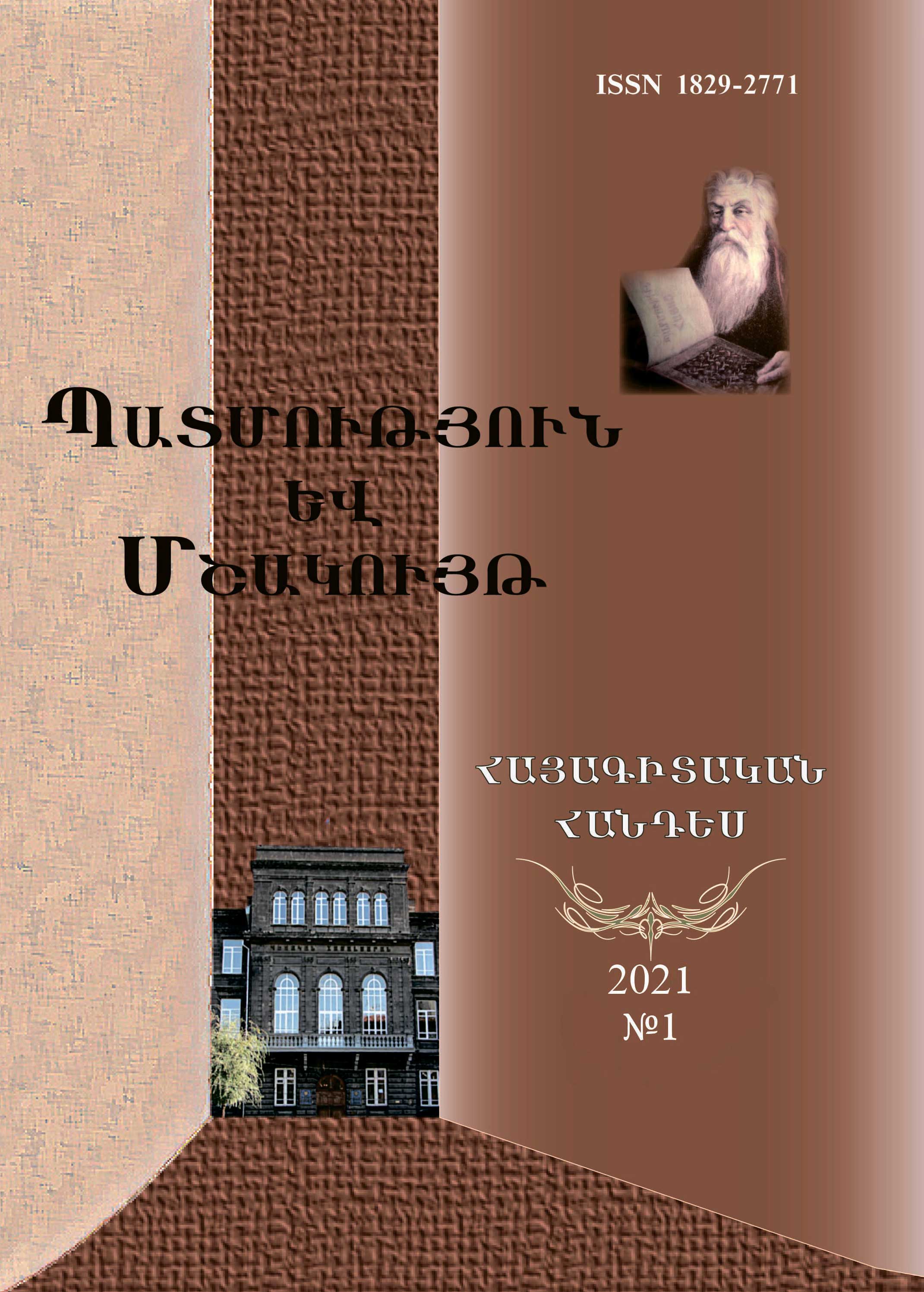On Studying of Residential Complexes of Aghdznik (the second half of the 19th century and the beginning of the 20th century)
Keywords:
historical Agdznik, Sasun, mountain settlement, tribal settlements, housing types, related quarters, self-defenseAbstract
The article is devoted to the study of residential complexes of the Armenian population of the historical province of Agdznik. The author, through a comprehensive study of historiographic and mainly field ethnographic materials recorded by him, revealed a number of peculiar aspects of the subject of research.
- a) Before the Genocide and the exodus of the Armenians, the Armenian village in Agdznik preserved the ancient custom of settling by kindred clans and even the whole family in a separate settlement, which was dictated by socio-economic and defensive considerations. Consequently, one of the characteristic features of the settlement was the cohesion of housing complexes under one common roof, thus the village plan strove for roundness.
- b) For centuries, not only this region, but almost all of historical Armenia was a crossroad for the movement of foreign invaders, because of which the Armenian settlements for defensive reasons were compressed, suppressed and crumpled, very often closed, narrowed rural paths.
- c) Rural settlements appeared as adjoining to each other, connected to each other from the inside and outside of the complex of houses, the roofs of which turned into paths, sites for collective work, meetings, celebrations.
- d) For the organization of self-defense and in order to avoid robbery and insult by the invaders, they were forced to build for the often repeated "hospitality" of travelers, isolated communal hotels in the air.
- e) Here for a long time, almost invariably, the custom of cohabitation by families of a clan persisted, which very often led to the emergence of clan settlements.
- f) Living in scattered houses, which is also stated by the testimony of the medieval historiographer Tovma Artsruni, was due to the fragmentation of the terrain, inaccessibility, the need to have land plots near the forest, fertilize fields with animal dung, be closer to pastures, winter feed for livestock, the exclusion of the almost impossibility of transporting goods.
Downloads
Published
2021-08-31
Issue
Section
Articles
License
Copyright (c) 2021 Rafik Nahapetyan

This work is licensed under a Creative Commons Attribution-NonCommercial-ShareAlike 4.0 International License.

